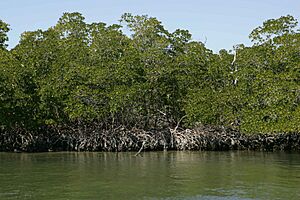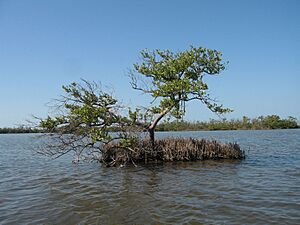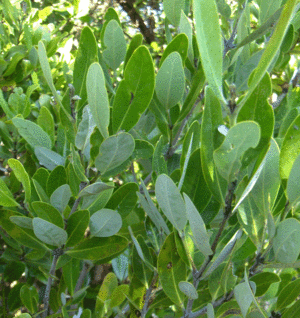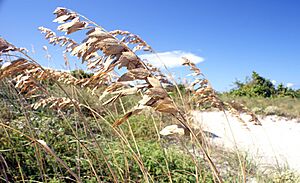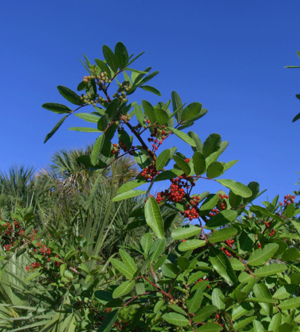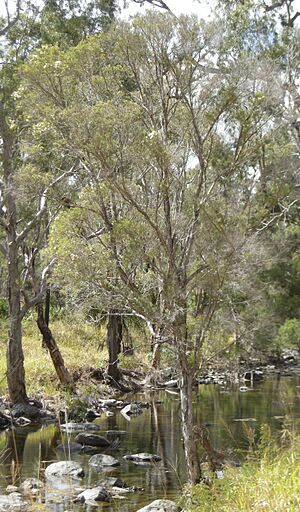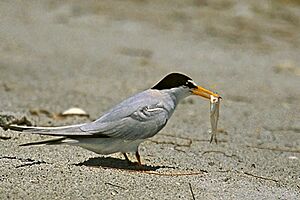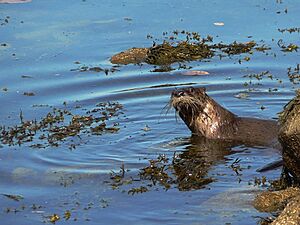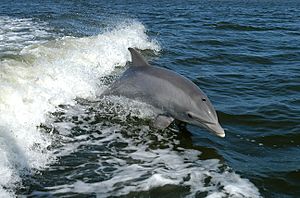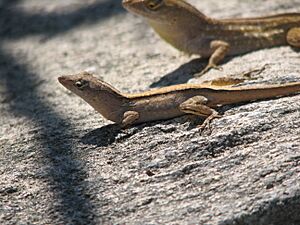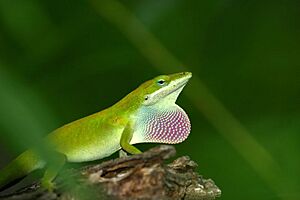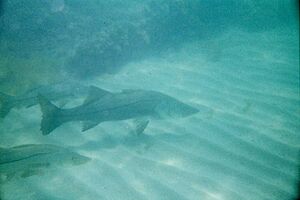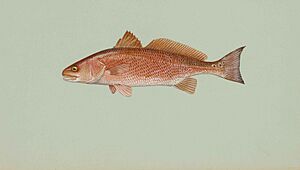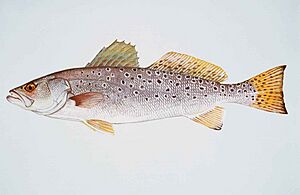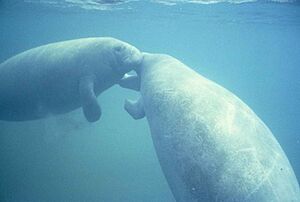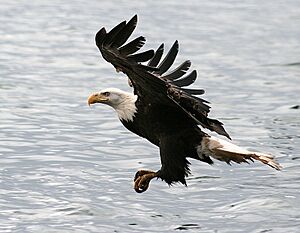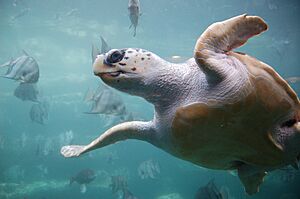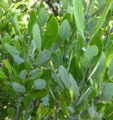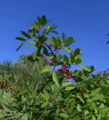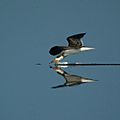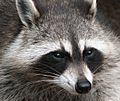Ten Thousand Islands National Wildlife Refuge facts for kids
Quick facts for kids Ten Thousand Islands National Wildlife Refuge |
|
|---|---|

Refuge in 2014
|
|
| Nearest city | Goodland, Florida |
| Area | 35,000 acres (140,000,000 m2) |
| Established | 1996 |
| Governing body | US Fish & Wildlife Service |
| Website | Ten Thousand Islands National Wildlife Refuge |
The Ten Thousand Islands National Wildlife Refuge is a special place in Southwest Florida. It's located in Collier County, between Marco Island and Everglades City, Florida. This refuge was created in 1996 and covers a huge area of 35,000 acres, which is about 14,164 hectares! It's part of the Ten Thousand Islands area.
This refuge protects a large area of mangrove forests, which are unique trees that grow in salty water. It has both fresh and saltwater environments, making it a home for many different plants and animals.
Contents
What Can You Do Here?
You can enjoy many activities at the Ten Thousand Islands National Wildlife Refuge. These include:
- Fishing
- Hunting
- Bird watching
- Kayaking
- Camping
Amazing Plants and Animals
The refuge is bursting with life! It's home to about 200 types of fish and 189 kinds of birds. There are also countless plant species here. Let's explore some of them!
Mangrove Trees
Mangroves are super important trees that grow in coastal areas. They help protect the land from storms and provide homes for many animals.
Red Mangrove
The red mangrove (Rhizophora mangle) is the most common type of mangrove in Florida. It can be a small bush or a tall tree. These mangroves are special because their seeds start growing while still on the tree. These young plants, called seedlings, then drop into the water and float away to find a new place to grow.
Black Mangrove
Black mangroves (Avicennia germinans) love very salty soil, just like red mangroves. They have special roots called pneumatophores that stick up out of the mud. These roots help the tree breathe and also support it in the soft soil.
White Mangrove
Unlike red and black mangroves, the white mangrove (Laguncularia racemosa) usually grows on higher, drier land. Their leaves are thick and roundish, which helps them store water.
Coastal Grasses
These grasses are important parts of the coastal environment.
Cordgrass
Cordgrass (Spartina alterniflora) is often found in marshy areas. If there's too much of this grass, it can reduce the muddy areas where shorebirds like to find food.
Sea Oats
Sea oats (Uniola paniculata) usually grow on sand dunes. They are very good at handling salt spray from the ocean, which most plants can't do.
Invasive Plants
Some plants are not native to Florida and can cause problems by taking over habitats.
Brazilian Pepper
The Brazilian pepper (Schinus terebinthifolius) is also known as Florida holly. It can grow up to 12 meters (about 40 feet) tall with many tangled branches. This plant was first brought to the United States in 1898. It has now spread across thousands of acres in South Florida and is growing very quickly, pushing out native plants.
Melaleuca Tree
The melaleuca tree (Melaleuca quinuenervia) is another invasive tree in South Florida. These trees are harmful because they can dry up areas that are supposed to stay wet for most of the year. This changes the environment for many native animals and plants that need wet habitats.
Shore Birds
Many different birds live along the shores of the refuge.
Least Tern
The least tern (Sternula antillarum) is the smallest type of tern found in America. They build their nests on sandy shores in the southern parts of the United States. Small fish are their main food.
Black Skimmer
Black skimmers (Rynchops niger) get their name from how they hunt. They fly low, skimming the lower part of their beak in the water to catch small fish. They often live in large groups on sandy beaches.
Mammals
You might spot some interesting mammals in the refuge.
Raccoon
Raccoons (Procyon lotor) can sometimes cause problems for sea turtles. They are a main reason why loggerhead sea turtle nests can be destroyed. When raccoons are moved away from smaller islands, the turtle nests often start to do better.
North American River Otter
River otters (Lontra canadensis) mostly live in rivers, marshes, and swamps. They enjoy eating fish, amphibians (like frogs), turtles, and crayfish.
Bottlenose Dolphin
The bottlenose dolphin (Tursiops truncatus) is the most common type of dolphin. You can find them in both deep ocean waters and closer to the coast.
Reptiles
Reptiles are also an important part of the refuge's wildlife.
Brown Anole
The brown anole (Anolis sagrei) is an invasive lizard that has very large populations. They seem to be taking over the places where green anoles used to live. Brown anoles have even been seen eating green anoles.
Green Anole
Green anoles (Anolis carolinensis) eat many different spiders, insects, and other small creatures. They mostly live in trees.
Fishes
The waters of the refuge are home to many types of fish.
Tarpon
Tarpon (Megalops atlanticus) are usually found in coastal bays, river mouths, and lagoons lined with mangroves. They eat a wide variety of animals, from smaller fish like mullet and sardines to crabs.
Common Snook
Snook (Centropomus undecimalis) can be found close to shore, around mangroves, bridges, and seawalls. All snook are born male, but when they grow to be about 18-22 inches long, some of them change into females.
Red Drum
The red drum (Sciaenops ocellatus), also called redfish, gets its name from the drumming sound it makes when it's spawning (laying eggs). Young redfish stay in rivers and bay areas. As they get older, they move towards coastal areas and open water.
Spotted Sea Trout
Spotted sea trout (Cynoscion nebulosus) can be found around seagrass beds or oyster bars. Their main diet includes shrimp, pinfish, or pigfish.
Threatened and Endangered Animals
Some animals in the refuge need special protection because their populations are at risk.
West Indian Manatee
The West Indian manatee (Trichechus manatus) has been considered an endangered species since 1967. Manatees travel to different places depending on the changing temperatures. They can live in fresh, slightly salty (brackish), or salty water.
Bald Eagle
The bald eagle (Haliaeetus leucocephalus) has been the national symbol of the United States since 1782. They mostly eat fish and other birds. You can find them near rivers, lakes, marshes, and coastal areas.
Atlantic Loggerhead Sea Turtle
The Atlantic loggerhead sea turtle (Caretta caretta) is considered a threatened species. Their population today is much smaller than it used to be.
Images for kids


